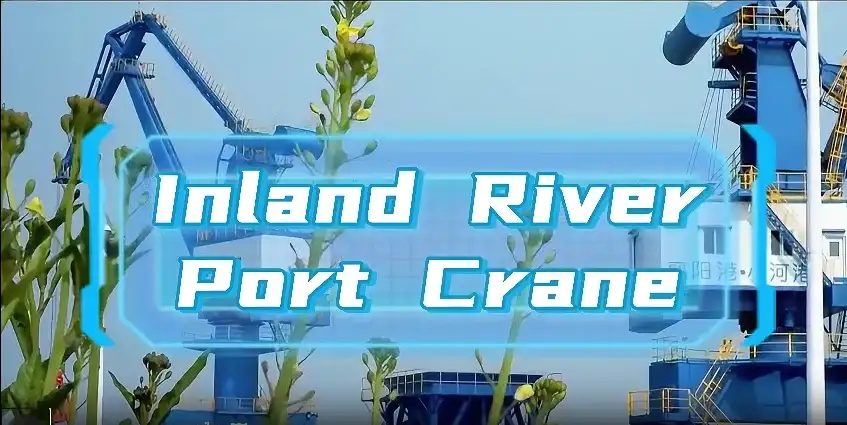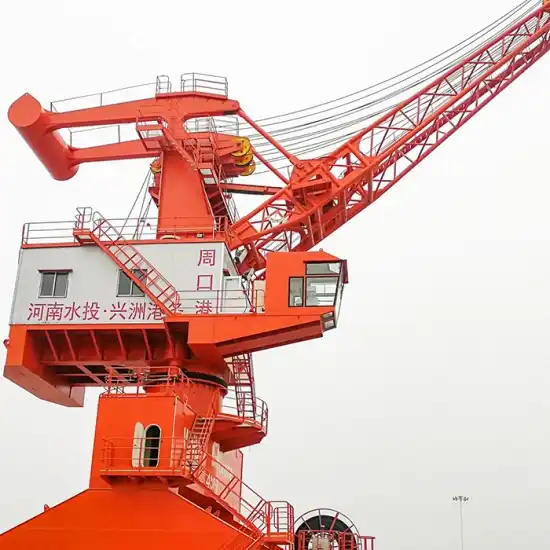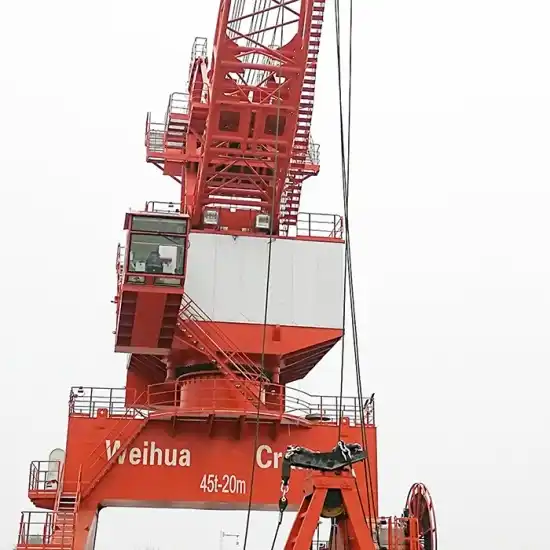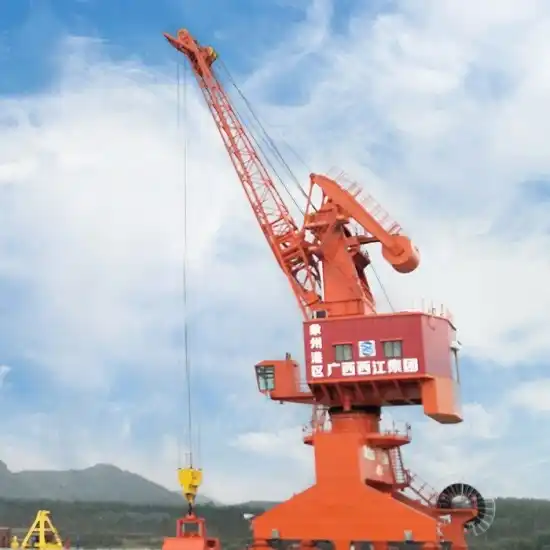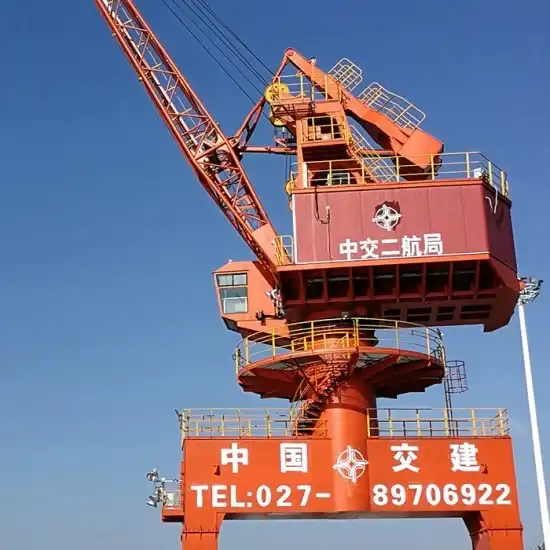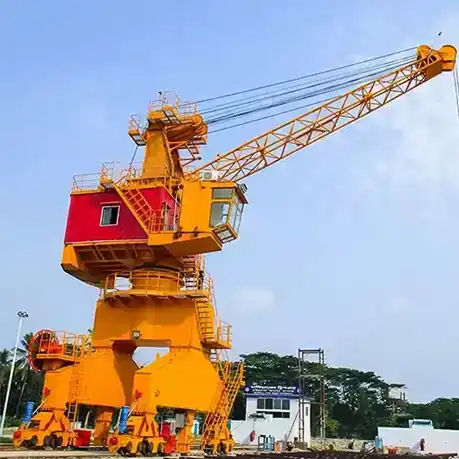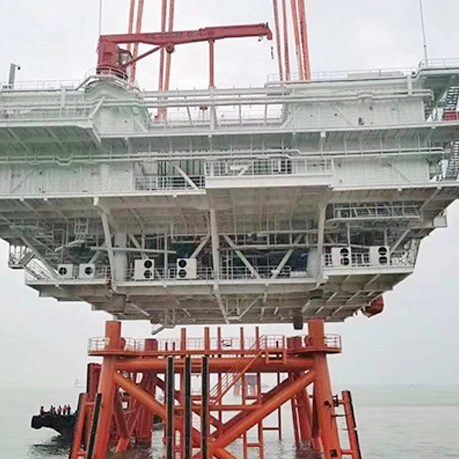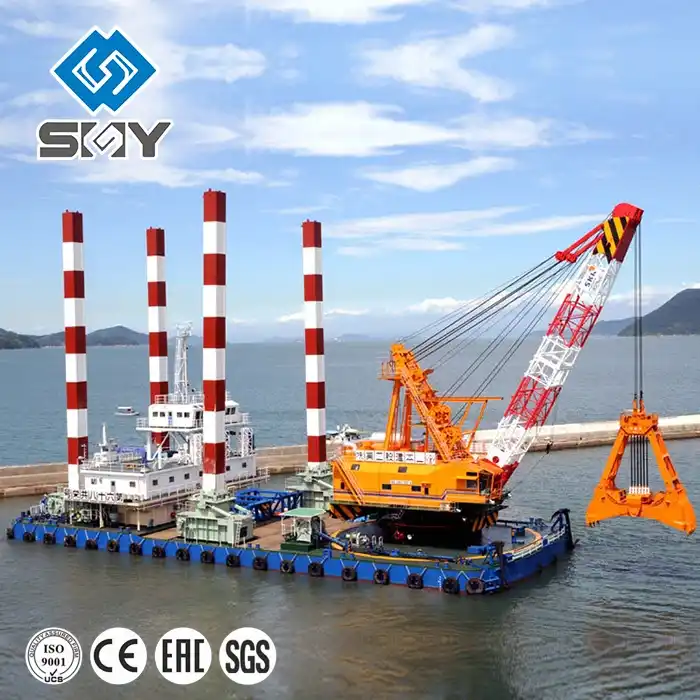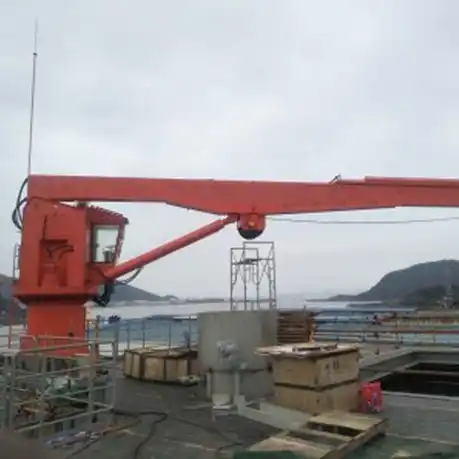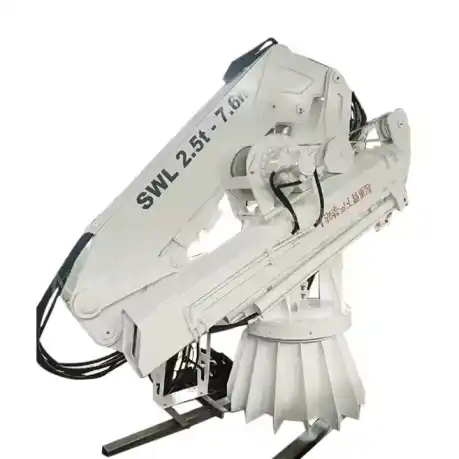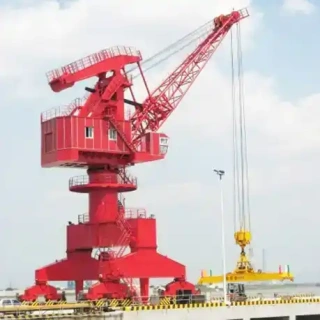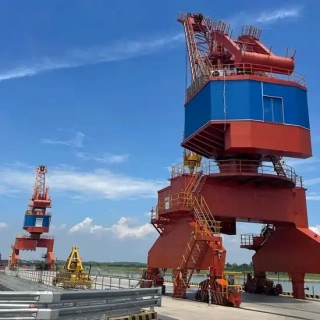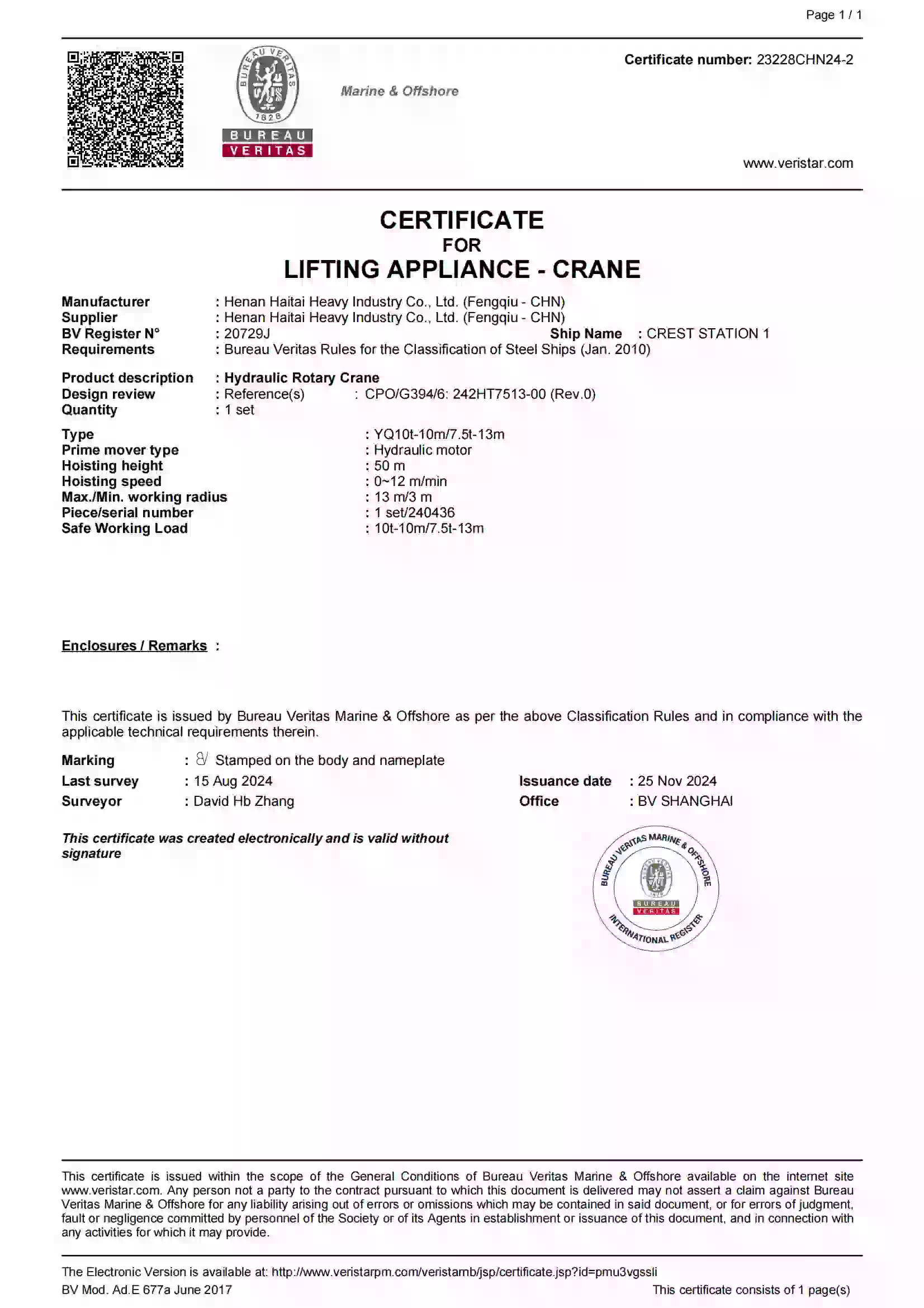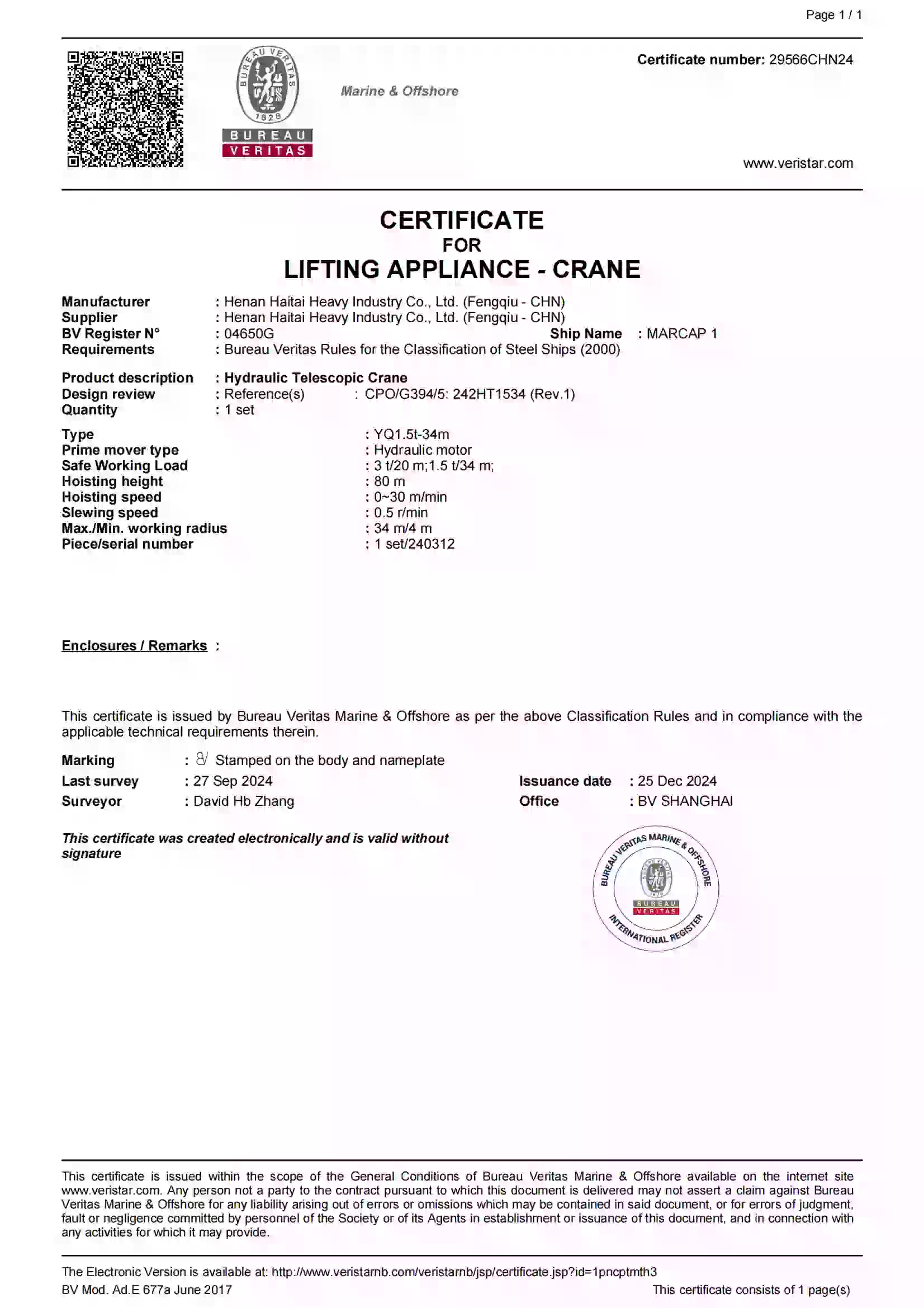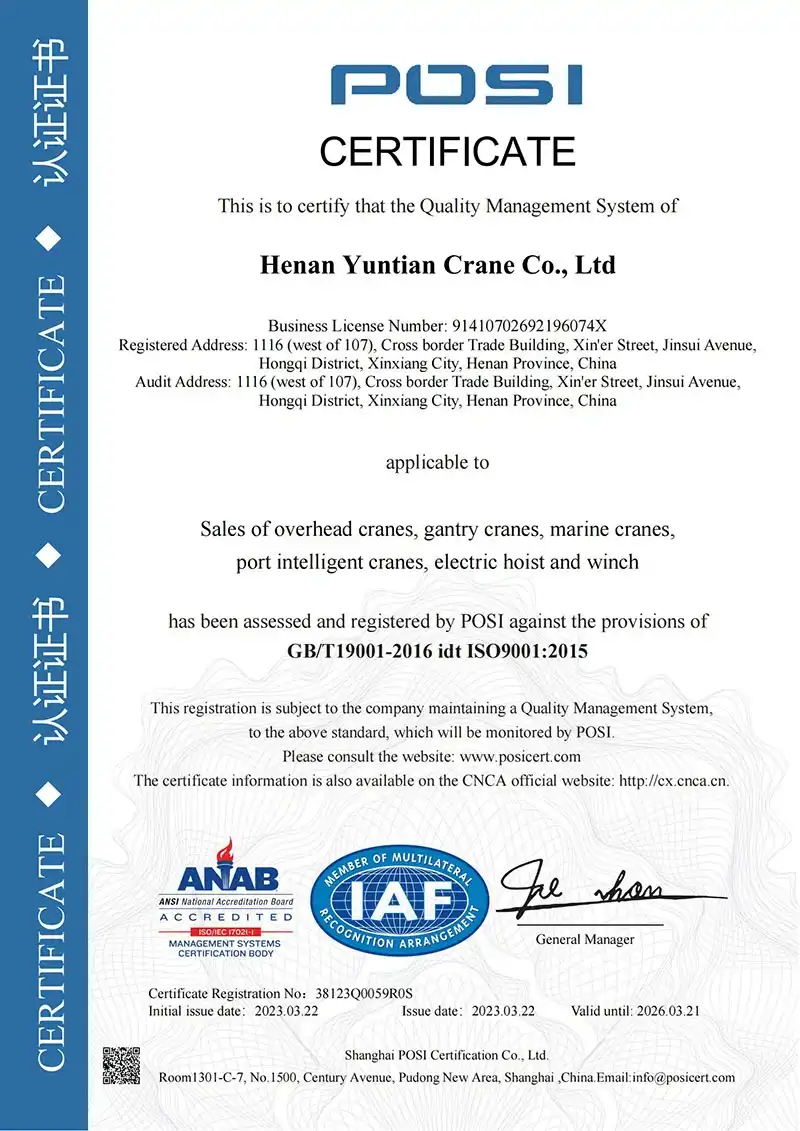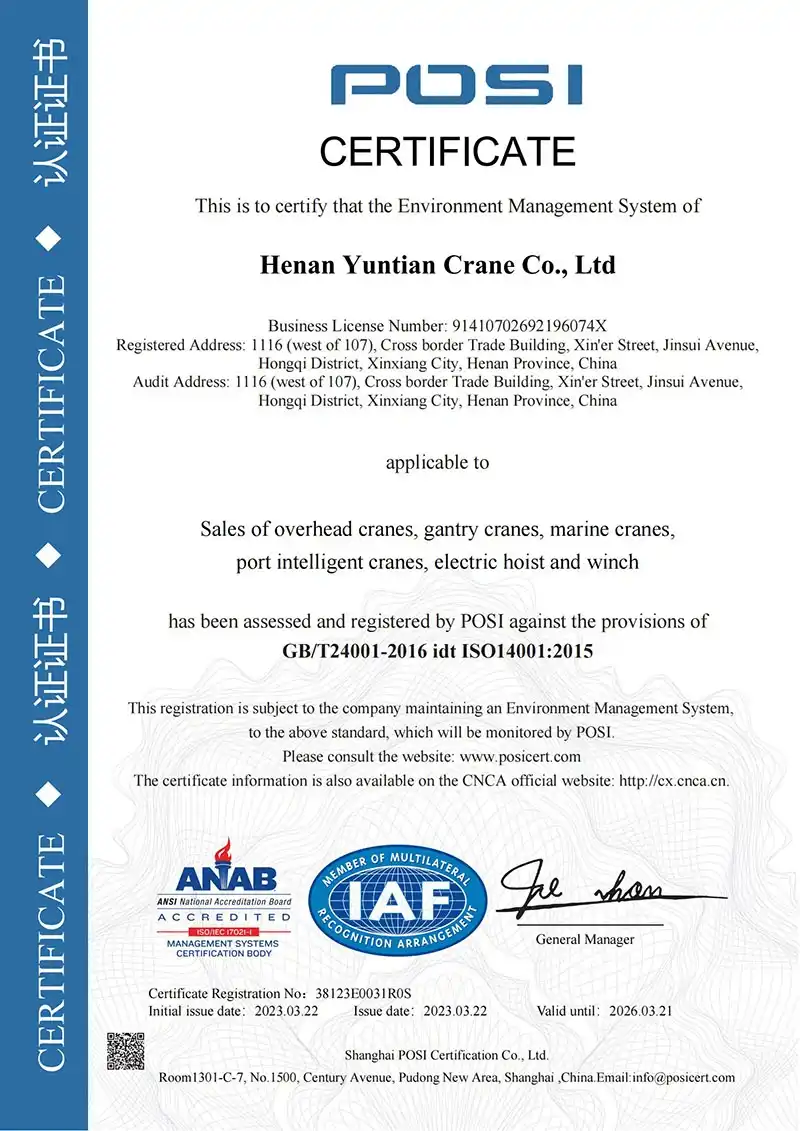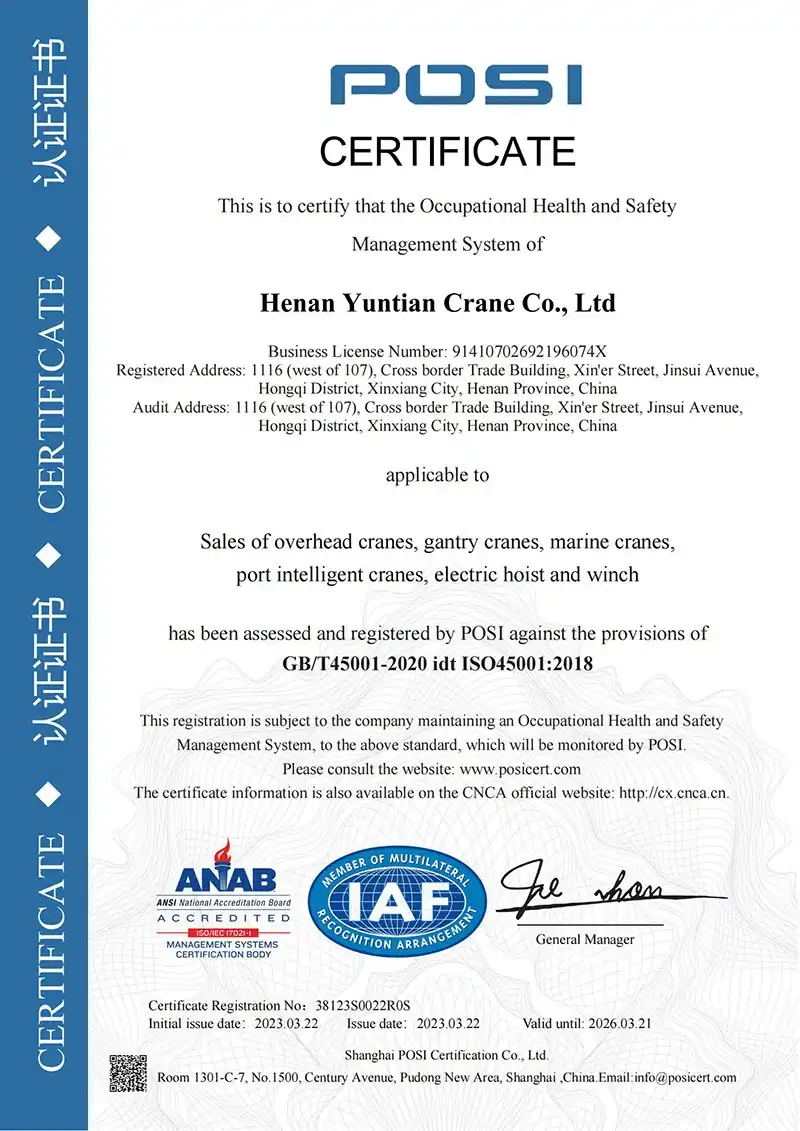





The Single Jib Portal Crane is an efficient lifting solution made for ports, shipyards, construction sites, and industrial logistics. Its special design lets multiple cranes work next to each other on the same ship. This improves productivity and saves space.
It uses advanced slewing mechanisms (like rotating column or rolling bearing types). This reduces the tail swing radius and improves pier coverage. That makes it perfect for busy port operations.

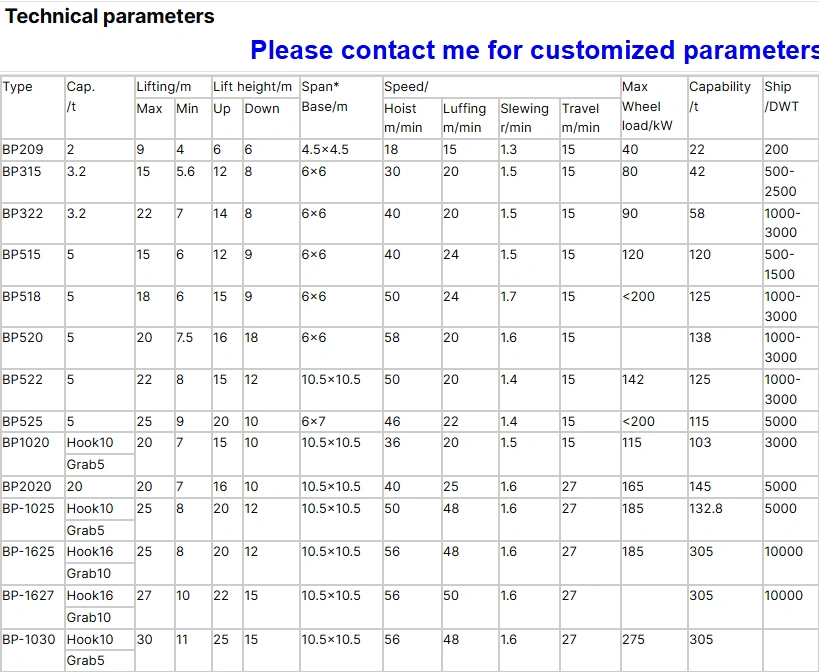
Key Advantages of Single Jib Portal Crane
✅ Saves Space
The slewing mechanism reduces tail swing diameter.
The gantry structure uses less ground space, so more cranes can work together.
✅ Strong and Stable
The single boom design offers higher lifting capacity than multi-link booms.
A balanced luffing system (using rack-and-pinion or change-wheel sets) keeps operations stable.
✅ Wide Range of Uses
Ports & Shipyards: Loads and unloads containers, bulk cargo, and heavy machinery.
Construction Sites: Handles steel beams, prefab parts, and large equipment.
Power Plants & Mining: Lifts turbines, generators, and raw materials.
Rail & Logistics Hubs: Moves cargo between ships, trucks, and trains.
✅ Safe and Easy to Control
Includes safety systems like load limiters, rail clamps, and anti-collision sensors.
Uses AC frequency control for smooth lifting, luffing, and slewing.
Rotates 360° for accurate and fast cargo handling.
✅ Custom Options Available
Grab buckets for bulk materials like coal, grain, or ore.
Belt conveyors and telescopic funnels to move materials faster.
Remote monitoring and automation for smarter port operations.
Why Choose Our Single Jib Portal Crane?
🏆 Quality Manufacturing
Meets international standards (DIN, FEM, IEC, AWS, GB).
Over 14 years of experience making cranes and exporting worldwide.
🌍 Worldwide Supply & Support
Sold to over 100 countries (Africa, South America, Middle East, North America, etc.).
Professional installation and after-sales service.
💡 Competitive Benefits
Lifts up to 900 tons.
Energy-saving and low maintenance.
Custom solutions for different industries.
FAQs
❓ Why is a Single Jib Portal Crane better than a four-link boom crane?
Simpler structure, lighter weight, and higher lifting capacity.
Lower maintenance cost and easier to operate.
❓ Can it handle bulk materials like coal or grain?
Yes. It can use grab buckets and conveyor systems for loose materials.
❓ What safety features are included?
Load limiters, rail clamps, emergency brakes, and anti-sway systems.
❓ Do you offer installation and training?
Yes. We provide on-site installation, testing, and operator training.
Additional Technical Information (From Chinese Content)
A portal crane consists of two main parts: the upper rotating section and the lower fixed section. The upper part includes the boom system, A-frame, revolving platform, hoisting mechanism, slewing mechanism, luffing mechanism, cabin, and operator’s cabin. The lower part includes the portal frame, balance beam, running trolley, rail clamp, and anti-overturning devices.
Portal cranes can be divided into three main parts: metal structure, mechanisms, and electrical systems. The metal structure includes the boom, counterweight, revolving platform, A-frame, portal frame, balance beam, cabin, and operator’s cabin. The mechanisms include hoisting, luffing, slewing, and traveling. The electrical system includes power supply, electrical devices, and control systems.
Modern portal cranes are widely used for mechanical loading and unloading in ports and shipyards, as well as in large hydropower projects. They are essential for mechanized production.
Based on boom structure, portal cranes can be divided into four-link boom and single boom types. Based on usage, they can be classified into port cranes, shipyard cranes, and construction cranes. Each type has different features and requirements.
1. Port Portal Cranes
Used for loading and unloading ships and vehicles in ports. They focus on high efficiency and fast turnover.
2. Shipyard Portal Cranes
Used for assembling large sections and installing equipment in shipyards. They lift heavy loads accurately and require:
Compact design and good visibility.
High lifting capacity with both main and auxiliary hooks.
Slower speeds for precision (2–45 m/min normal, 0.1–5 m/min for installation).
Special features like dual-hook coordination and stability for floating docks.
3. Construction Portal Cranes
Used at hydropower stations for concrete pouring, steel installation, and equipment lifting. They require:
Compact size, light weight, and good visibility.
High lifting height and wide range (up to 70m above rail, 100m below, 50m reach).
Speeds similar to port cranes, but slower luffing and slewing to reduce swing.
Easy assembly/disassembly and multi-crane collaboration for heavy lifts.
Main Performance Parameters
Include lifting capacity, lifting height, lowering depth, max/min radius, tail radius, rail span, base distance, working speed, wheel load, and duty cycle.
Rail Span (L): Usually 6.5m, 10.5m, or 16m based on number of tracks crossed.
Base Distance (B): Typically 9–14m, based on slewing ring size, trolley length, load, and radius.
Lifting Height: 10–30m above rail for ports, up to 50m for shipyards; 15–20m below rail.
Min Radius: About 1/4 to 1/3 of max radius.
Work Speeds: Vary by use. Port cranes require high speeds; installation cranes need slow speeds with micro-speed control.
Typical port crane speeds:
Hoisting: 15–90 m/min
Luffing: 20–60 m/min
Slewing: 0.5–3 rpm
Traveling: 15–35 m/min
Main Mechanisms
Travel System
Most wheels are driven, but some are free-turning for curved tracks.
Half of the wheels are usually driven; all may be driven on slopes or for quick stops.
-
Load calculation depends on slewing support type (rigid or hinged frame).
Slewing System
Uses vertical motor + planetary gear reducer for high efficiency.
-
Includes safety devices like friction-type torque limiters to prevent overload.
Hoisting System
Includes motor, brake, reducer, drum, wire rope, pulleys, and attachments (hook, grab, etc.).
-
Safety devices: overload limiter, height limiter, speed protector.
Luffing System
Uses boom movement to change radius.
Unbalanced systems cause load lifting/lowering; balanced systems with compensation are used for efficient operation.
The Single Jib Portal Crane is a strong lifting machine used in many industries. It works well in ports, construction sites, energy projects, and logistics hubs.
1. Ports & Shipyards – Fast Cargo Handling
Moves containers between ships, trucks, and yards.
Handles bulk materials like coal, grain, ore, and cement using grab buckets.
Lifts heavy ship parts such as engines, propellers, and steel plates.
Multiple cranes can work together on one ship.
Why It Works Well:
Small tail swing – Fits in tight spaces.
Fast operation – Reduces ship waiting time.
2. Construction Sites – Lifting Heavy Items
Lifts steel beams, columns, and prefab parts.
Places concrete blocks, bridge pieces, and machines.
Installs wind turbine blades, generators, and transformers.
Why It Works Well:
Long reach and accurate control – Good for tall structures.
Stable luffing system – Safe to use in windy weather.
3. Logistics & Rail Hubs – Moving Cargo Quickly
Transfers containers between trains and trucks.
Moves heavy pallets, machines, and large goods in warehouses.
Lifts and sorts scrap metal in recycling yards.
Why It Works Well:
Full 360° rotation – Works well in tight spaces.
Custom tools like magnets and grabs – Handles different cargo.
4. Energy & Mining – Transporting Heavy Materials
Loads and unloads coal, ore, and other bulk goods.
Lifts boilers, turbines, and generators for repairs in power plants.
Used on barges for marine projects.
Why It Works Well:
Lifts very heavy loads – Up to 900 tons.
Resists rust – Good for salty or dusty places.
5. Industrial Manufacturing – Supporting Production
Moves heavy machines like presses and CNC equipment.
Handles steel coils, slabs, and containers in steel mills.
Lifts large parts in car and airplane factories.
Why It Works Well:
Precise control – Safe with delicate items.
Low maintenance – Less downtime.
Additional Technical Information (From Chinese Content)
Modern industry requires faster port operations. Single jib portal cranes with rack-type luffing are now widely used in ports and terminals. These cranes can use grabs, hooks, or spreaders. They handle bulk, general, and break-bulk cargo efficiently. The hoisting, luffing, and slewing motions can work alone or together. They are easy to operate and work very efficiently.
However, these cranes need frequent maintenance because they work fast and handle heavy loads. The pulleys and wire ropes wear out over time and need regular inspection or replacement. Ports need to reduce maintenance time to keep productivity high.
Usually, maintenance is done high on the boom using ladders and platforms. This is risky. Sometimes large cranes are needed to replace parts in the air, which is also unsafe.
Shipyard cranes lower the boom to the ground for maintenance. This is safer and faster. A new type of single jib portal crane now also lowers the boom to the ground. This allows easy ground-level maintenance. It saves time and cost. It also improves safety and reduces the need for high platforms.
This new crane uses a truss boom and rack-and-pinion luffing. It can use hooks, spreaders, or grabs. It does not increase the total weight or wheel load. It does not require more power because it uses the hoisting system to lower the boom.
This design shortens maintenance time and makes repairs easier. It improves equipment usage and port throughput. It saves resources and improves management efficiency. Ground-level maintenance reduces risks and removes the need for high platforms. This makes the boom lighter and reduces luffing power. It meets national safety and energy saving rules.
Portal cranes are large rotating cranes that run on tracks. They look like a gate, so they are called portal cranes. They are used in ports, shipyards, and large hydropower projects.
Portal cranes were developed for ports. The first models were used in 1890. After World War II, they became more common. New designs made them easier to use in tight spaces.
Portal cranes have four main motions: hoisting, slewing, luffing, and traveling. They can lift over trains and trucks. They are reliable and efficient.
They can handle almost all types of cargo: iron ore, coal, grain, cement, logs, steel plates, large items, bags, containers, and more. They can load and unload ships. This flexibility is useful when ports need to change or upgrade equipment.
Key Features:
High speed: Hoisting up to 70 m/min, luffing up to 55 m/min.
Wide lifting capacity: Usually 5–100 tons, up to 150–300 tons for shipyards.
High efficiency: Can work 22 hours per day. Each hour it can move over 100 tons.
Tall structure: Does not take much ground space. Has high lifting height and long reach.
High cost: Uses a lot of steel. Weighs 500–1000 tons.
Needs strong power supply: Usually 10kV/50Hz.
Large wheel load: Up to 300 kN for a 40T/45M model. Requires strong foundation and support equipment.


